Historical Places in Egypt offer an exciting holiday experience via one of the world’s most ancient cultures. From the stunning pyramids at Giza to towering temples and ancient tombs, these landmarks bring out the country’s glorious and illustrious past. Every monument whispers tales of pharaohs, deities, and mythical dynasties. Whether you are a history buff, or archaeology buff, or interested in ancient wonders, Egypt’s historical sites promise a breathtaking experience of timeless beauty, rich culture, and unforgettable history inscribed on stone for centuries.
10 Historical Places To Visit In Egypt
These historical places in Egypt are its heritage, religion, ingenuity, and strength, a tale of an ancient nation.
1. The Great Pyramid Of Giza
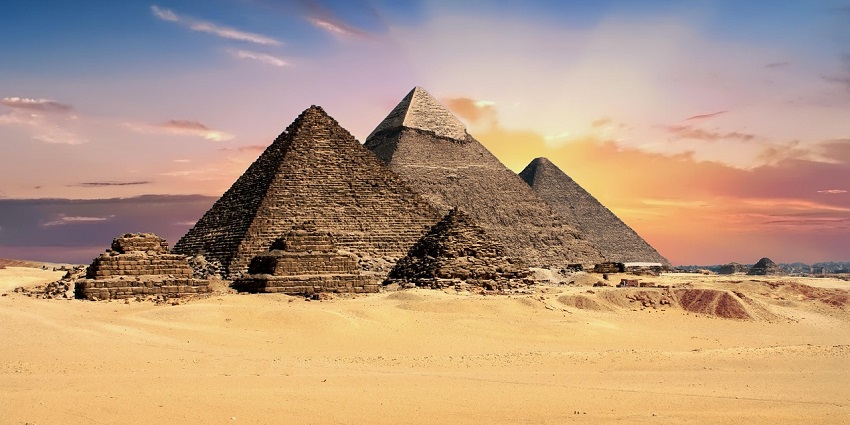
Photo: TheDigitalArtist / Pixabay
The Great Pyramid of Giza is arguably Egypt’s most stunning ancient landmark and the only surviving wonder of the ancient world. Located on the Giza Plateau west of Cairo, this gigantesque structure was built during the Fourth Dynasty of the Old Kingdom, around 2560 BC, for Pharaoh Khufu (alternatively called Cheops). It was once an astonishing 146.6 meters (481 feet) high, and for over 3,800 years, it was the tallest human structure in the world. The pyramid is made up of approximately 2.3 million limestone blocks, which showcase the greater engineering skills of the ancient Egyptians.
Location: Giza Plateau, Cairo
Major Attractions: Pyramid of Khafre, Pyramid of Menkaure, Sphinx
2. Karnak Temple Complex
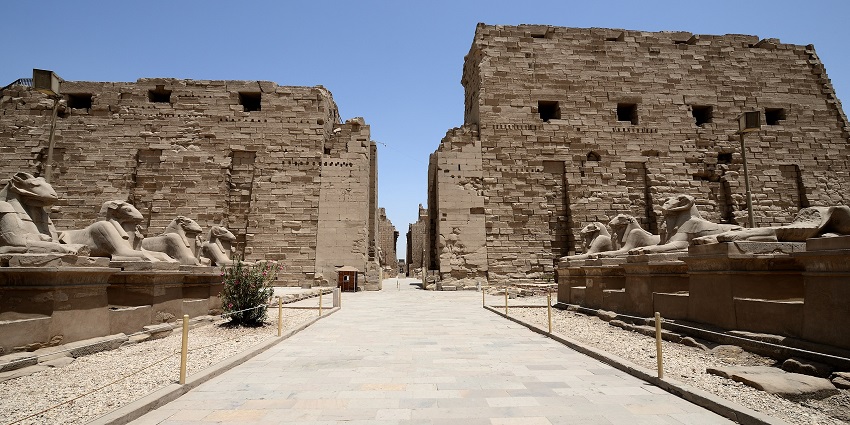
Photo: Hamerani / Wikimedia Commons
The Karnak Temple, in the ancient city of Luxor, is arguably the most staggering and gigantic religious temple ever built. It is one of the most famous historical places in Egypt. Spanning over 200 acres, this gigantic temple complex was developed for over 2,000 years, with contributions from various pharaohs, each adding their own version. Fully devoted to the Theban pantheon of divinities—Amun, his wife Mut, and their son Khonsu—Karnak was a significant place of worship during ancient Egypt’s New Kingdom. Its towering pylons, ornate carved columns, giant statues, and sacred lakes stand testament to a vivid tapestry of Egypt’s shifting religious and political past.
Location: Luxor
Major Attractions: Hypostyle Hall, Obelisk of Hatshepsut, Sacred Lake
3. Valley Of The Kings
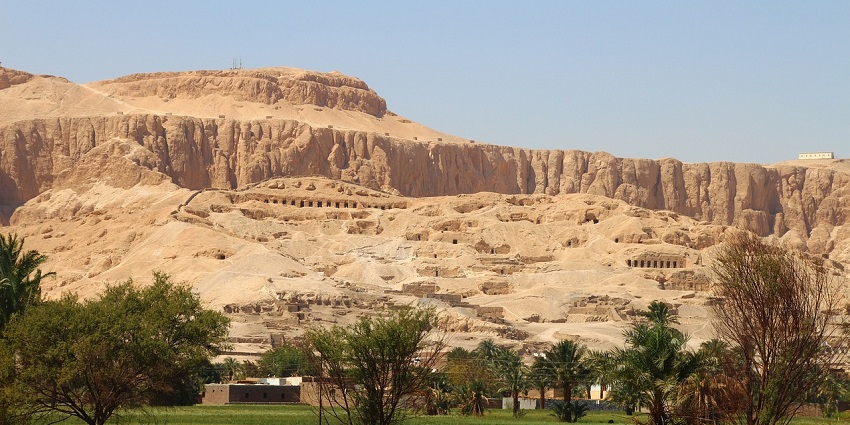
Photo: Freiheitsjunkie / Pixabay
The Valley of the Kings, situated on the west bank of the Nile near Luxor, is one of the most renowned historical places in Egypt. This ancient cemetery was utilised for the final resting places of the New Kingdom pharaohs, spanning the 16th to the 11th century BC. Over 60 highly decorated tombs were uncovered deep in the limestone rock face, and every one of them had been built to guide the dead into immortality. Among the most famous is the tomb of the boy king, Tutankhamun, discovered almost intact in 1922 by Howard Carter, which produced a treasure trove of artefacts.
Location: West Bank, Luxor
Major Attractions: Tomb of Tutankhamun, Ramses VI, Seti I
4. Abu Simbel Temples
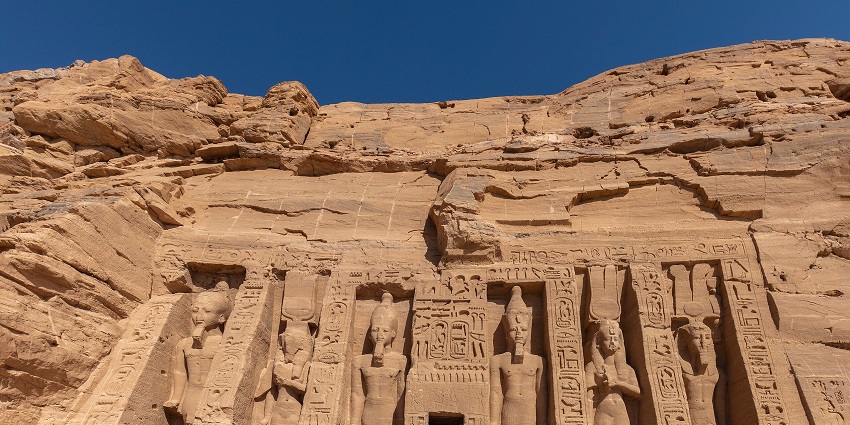
Photo: Diego Delso / Wikimedia Commons
The Abu Simbel temples, located in the southern part of Egypt on the Sudanese border, are stunning monuments carved out of a sandstone cliff. Built in honour of Pharaoh Ramses II in the 13th century BC, the two temples were built to honour him and his beloved wife, Queen Nefertari. The large temple features four enormous statues of Ramses II seated on his throne, standing at the door, and symbolising his divine nature. Within, delicate carvings depict his military victories and religious beliefs. The minor temple, dedicated to Nefertari and the goddess Hathor, is no less significant.
Location: Nubia, southern Egypt
Major Attractions: Sunrise light streaming into the temple interior, Sound & Light Show
5. Temple Of Hatshepsut
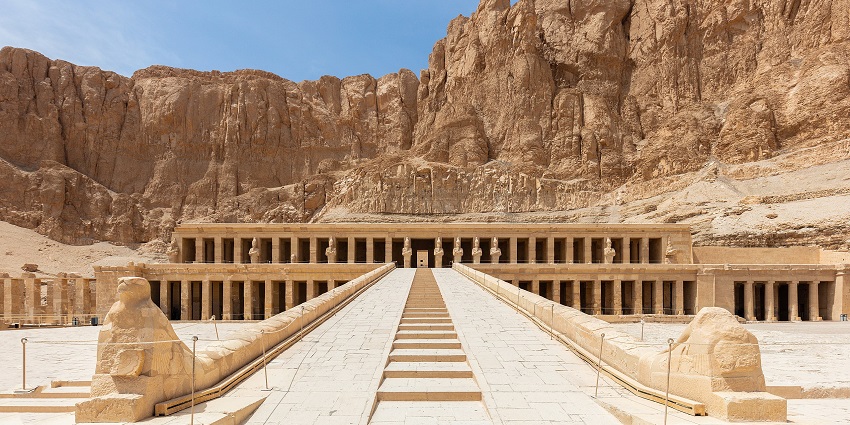
Photo: Diego Delso / Wikimedia Commons
The Mortuary Temple of Hatshepsut, located at Deir el-Bahari outside Luxor, is an inspiring tribute to the life of one of Egypt’s most magnificent female pharaohs. Set against dramatic cliffs of limestone, the temple is notable for its innovative and lovely architectural style of terracing that harmoniously integrates with nature. Commissioned by Hatshepsut in the 15th century BC, the temple is dedicated to the god Amun and serves as a place of worship and also the commemoration of her reign. Its beautifully preserved reliefs narrate significant events such as her miraculous birth and trade expeditions to Punt land.
Location: Deir el-Bahari, Luxor
Major Attractions: Collonaded terraces, Sun Court, Statue of Osiris
6. The Egyptian Museum
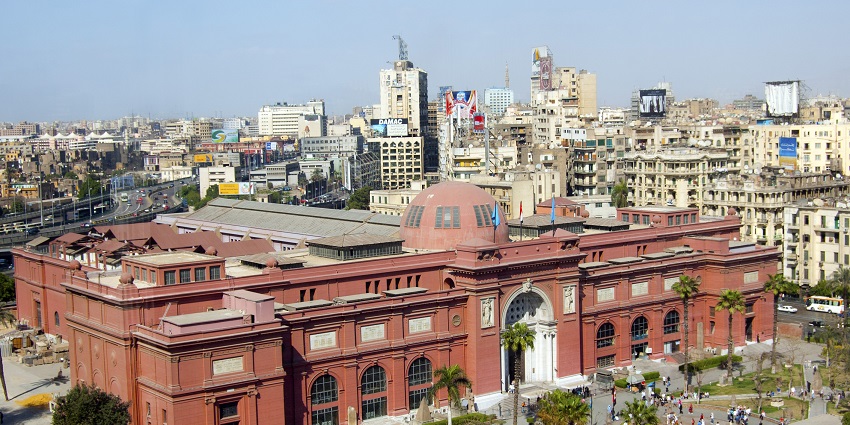
Photo: Bs0u10e01 / Wikimedia Commons
The Egyptian Museum in Cairo is an antiquities storehouse of ancient Egyptian history, containing the world’s biggest Pharaonic antiquities collection. As a destination not to be missed among historical attractions, the museum offers an unparalleled view into Egypt’s rich heritage, with artefacts dating back thousands of years. Its biggest draws are the stunning treasures of Tutankhamun’s tomb, such as the iconic golden mask that has fascinated visitors worldwide. The museum also showcases a large collection of mummies, statues, ornaments, and daily objects of various dynasties, revealing the art and cultural achievements of ancient Egypt.
Location: Tahrir Square, Cairo
Major Attractions: Tutankhamun galleries, Royal Mummy Room
7. Temple Of Philae
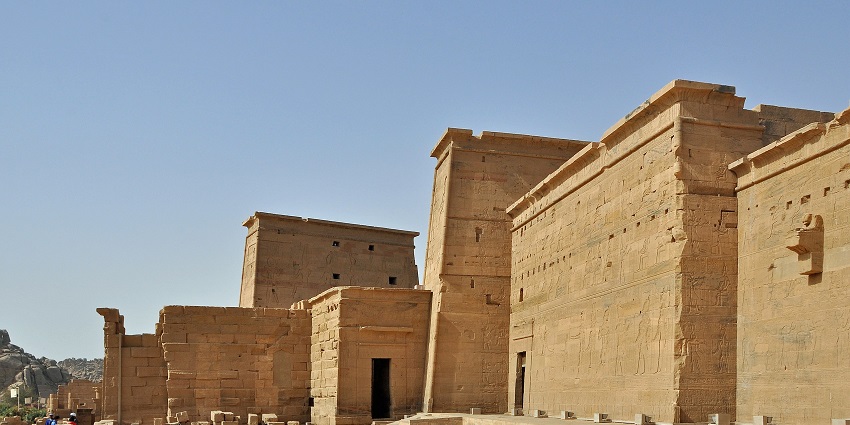
Photo: Marc Ryckaert / Wikimedia Commons
The Temple of Philae, the temple of Isis, is the most magical historical place in Egypt, situated on the Nile. The temple complex originally stood on Philae Island but was moved to Agilkia Island during the 1960s in order to protect it from being submerged by flooding due to the construction of the Aswan High Dam. This massive rescue operation, spearheaded by UNESCO, saved the temple’s elegant architecture and intricate carvings. The temple complex shows Greco-Roman influence in its monumental pylons, courtyards, and relief carvings narrating the myth of Isis and Osiris.
Location: Off Aswan
Major Attractions: Boat ride to the temple, Light and Sound Show
8. Saqqara Necropolis
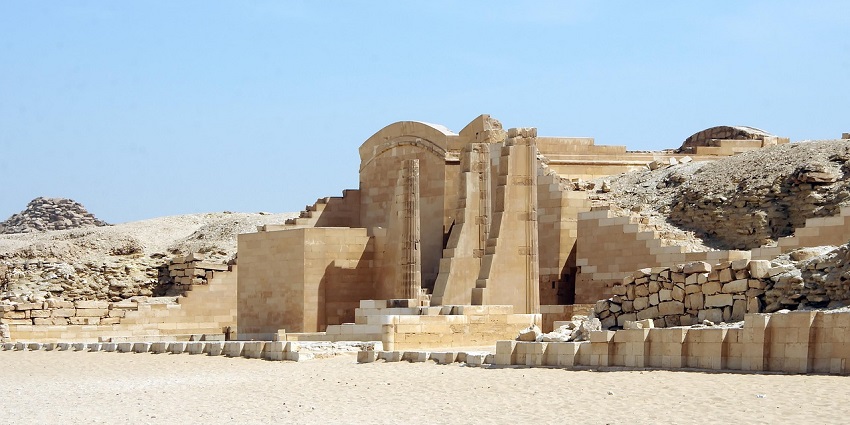
Saqqara is Egypt’s greatest ancient necropolis, celebrated for its extensive necropolis spanning a variety of several dynasties. It is most notably the site of the Step Pyramid of Djoser, the oldest colossal stone building in Egypt and an innovative work in architecture of its day. The pyramid was a significant development in Egyptian funerary architecture, transformed from simple mastaba tombs to more sophisticated stone buildings. Saqqara’s extensive site holds many tombs, pyramids, and mastabas, with each holding varying periods of ancient Egyptian history and reflecting changing burial rites and artistic styles.
Location: South of Cairo
Major Attractions: Pyramid of Unas, Serapeum, Mastaba of Ti
9. Luxor Temple

Photo: AXP Photography / Pexels / Image For Representation Only
Luxor Temple, located in the busy centre of Luxor city, is a testament to the Renaissance of kingship in ancient Egypt. The beautiful temple complex was first built by Pharaoh Amenhotep III and later finished and added upon by Tutankhamun and Ramses II, showcasing improvements from a variety of important rulers. The temple is famous for its stunning colonnades, a series of massive columns that create an awe-inspiring and solemn mood. Across the temple, the lovely statues of gods and pharaohs add to the artistic skill and religious fervour of the time.
Location: East Bank, Luxor
Major Attractions: Avenue of Sphinxes, First Pylon, Ramses II Courtyard
10. Temple Of Edfu
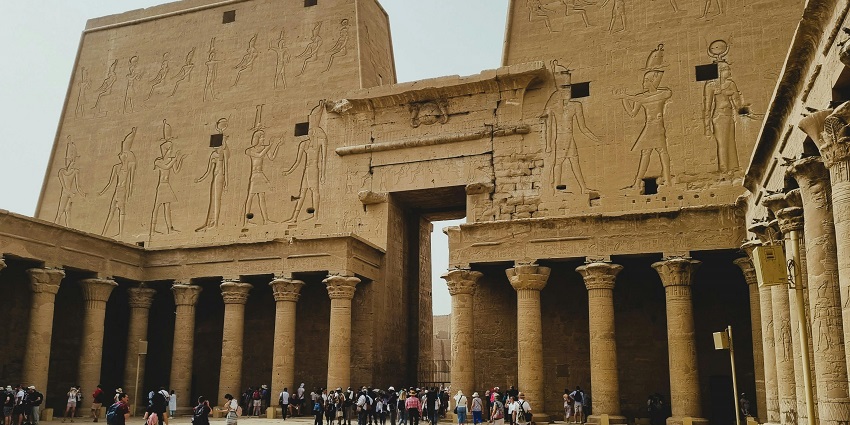
Photo: Francesco Albanese / Pexels
The Temple of Edfu is situated on the Nile River’s west bank between Aswan and Luxor and is one of Egypt’s best-preserved ancient temples. The temple constructed in his honour, in honour of Horus, the god of kingship and the sky god, with a falcon’s head, was constructed between 237 and 57 BCE during the Ptolemaic epoch. Its design incorporates true Egyptian form intertwined with the discreet Greco-Roman influence evident in its elaborate reliefs and architectural composition. The temple was an important cult centre for religion, where the rituals of the pharaoh in honour of Horus took place, emphasising his guardian role of the pharaoh and nation.
Location: Edfu, between Luxor and Aswan
Major Attractions: Inner sanctum, Pylon reliefs, Great Hypostyle Hall
Explore Egypt’s old wonders from ancient tombs and towering pyramids to impressive temples and priceless treasures that testify to the greatness of a civilisation that made its mark on the globe. These historical places in Egypt promise a lifetime’s experience with endless heritage and breathtaking beauty. Book your vacation now with TripXL and be taken back into Egypt’s legendary past for the ultimate enriching and unforgettable vacation experience.
Cover Photo: ibulski / Pixabay


 WhatsApp
WhatsApp
 Twitter
Twitter









